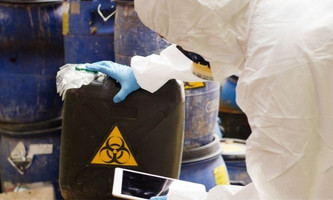Laboratory Safety 101: Hazardous Waste Management
Posted by USA Lab Equipment on Nov 2nd 2021
Almost every lab deals with hazardous materials in one way or another. Chemicals, biological specimens, and other materials can all become hazardous waste after your experiments conclude. To make sure your lab space follows the proper laboratory safety instructions, check out this brief walkthrough of tips for hazardous waste management.
Lab Safety Training
The first step in maintaining laboratory safety around hazardous wastes is to ensure that all lab technicians and employees have the proper training. Training for handling, storing, and disposal of hazardous waste is detailed, and not everyone will have this crucial prior knowledge when joining the team. This is where you should identify the hazards and what to do in the event of an accident or exposure.
Label Hazardous Materials
Labeling all hazardous waste containers in the laboratory is important for your safety and the disposal process. Name all storage containers that contain or have contacted hazardous waste with important information, like the name of the material, the dates affected, and the hazard warning. The warning will let your staff and future disposal sites know of the hazards, whether flammable, toxic, corrosive, reactive, and more. This labeling system also helps you know how to store such materials.
Protective Equipment
When actively working with or transporting hazardous waste, always use the proper protective equipment to shield yourself. You should only handle hazardous materials like chemicals in a safe and secure area, like inside the lab’s fume hood. You should also use personal protective equipment (PPE), like the appropriate gloves, goggles, lab coat, and potentially a respirator or mask. Also, remember never to leave a hazardous substance unattended, as breakage, corrosion, fire, or other accidents could occur.
Examples
If your lab frequently uses chemicals or any kind of hazardous materials, all these used experimental ingredients are considered hazardous waste. Waste ethanol, methanol, acetic acid, acetone, and other acids are common examples of hazardous lab materials. You must address any utensils or equipment that contact these materials as well. For example, many labs use laboratory filtration equipment and filter paper to separate chemicals. Treat these filter papers as waste materials and dispose of them properly.
Laboratories work under intense circumstances; one of such circumstances is using, transporting, and disposing of hazardous materials. We hope this brief lesson on Laboratory Safety 101 has helped illuminate some of the safety measures to take with hazardous waste management.

